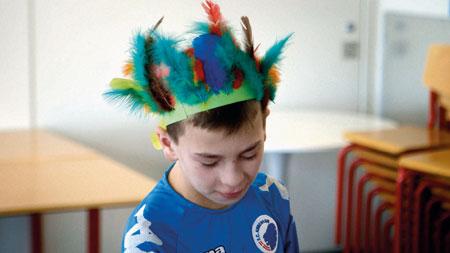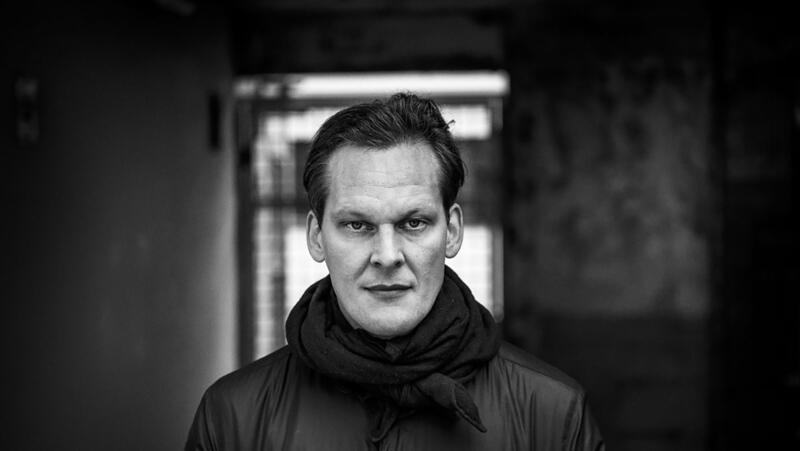Ali is seeing things. He sees five knife-wielding men come and beat up his father while his mother cries. Ali is 10 years old and lives at an asylum centre in Denmark. He can only remember fragments of his life in Afghanistan. Since fleeing with his parents, he has been through Iran, Turkey, France, Italy, Denmark and Norway – before landing back in Denmark again. Today, both his parents are mentally ill. The family has come close to being deported several times. Once, the police came and got them, but their deportation was halted at the last minute. As a result of it all, Ali suffers mental health problems, including hallucinations.
"We come in with our Western mentality that you should talk with your children and involve them, but that’s not necessarily the case with these families." – Andreas Koefoed
Ali is one of thousands of refugee children who, alone or with their parents, are applying for humanitarian visas in Europe. Having survived the perilous journey to the West, they are now waiting to have their asylum applications processed.
We are introduced to Ali in Andreas Koefoed's At Home in the World. Adhering to a sober, fly-on-the-wall style, the documentary tracks the school days of five refugee children at a Danish asylum school. Magomed, Ali, Sehmuz, Heda and Amel are each trying to find their footing in their new country, where they may or may not be allowed to stay.
Finding a New Place
What does it mean to be a child and a refugee? That's the question Andreas Koefoed's new film examines – at a time when we are bombarded by refugee stories but rarely get a window into the lives of refugee children.
"I wanted to find out what it means for these children to tell their stories when they have been on the run and exposed to violence. To investigate what happens now that they have to find a new place in the world and to look at what they do to cope and move on. How do they talk about it, and what does it mean for them to let others into their thoughts? I wanted to investigate how the children are impacted by violent experiences of this kind."

The children's stories are tied together by the figure of their dedicated teacher, Dorte. Koefoed was originally inspired by Nicolas Philibert's documentary To Be and to Have (2002), about a charismatic teacher at a small village school in France. That film was praised for its sober but moving portrayal of the teacher and his pupils.
In a somewhat similar vein, we view the children in At Home in the World through Dorte’s eyes. It’s Dorte who talks with them when they are frustrated and sad. It’s Dorte who tells them what their new school is like, when they are ready to graduate to a Danish public school, and it’s Dorte who waves goodbye and seems to lose a little bit of herself every time a pupil she has connected with boards the bus from the asylum school for the last time.
Tough Stuff for a 10-Year-Old
Ali doesn't know why his parents aren't doing well. He only knows that his mother cries and his father "does dumb things." Koefoed came to realise that the children rarely understand the reasons why they had to flee.
"Often, they know very little. We come in with our Western mentality that you should talk with your children and involve them, but that's not necessarily the case with these families. Generally, the children have only been told they had to leave but not why."
Perhaps the parents' traumatic experiences are too much for their children. When 10-year-old Magomed from Chechnya asks his father what the Russians did to him after they captured him in their home country, his father tells him that they hit him with a gun, put a mask over his head and shocked him until he passed out. When he came to, they shocked him again. They finally let him go, but when he came home he was so badly bruised his family couldn't recognise him. If he goes back to Grozny, he'll either be shot or imprisoned for 15 years.
"If I had to go to jail for 15 years, I’d rather be shot," his father says. Tough stuff for a 10-year-old.
The scene is important, Koefoed says, because it shows the emotional baggage these children carry with them – traumas, uncertainty, fear that the family will be sent back.
"I want people who see the film to get an experience of what it means to be a child in this situation – on the run and having to find a new home. I want the viewers to feel that this could be their child."
Children, Not Headlines
Andreas Koefoed, who has made several character-driven documentaries and been nominated for four IDFA awards, has a penchant for films about children. His documentary short 12 Notes Down follows a boy who has sung in a boy's choir most of his life but is confronted with adult life when his voice changes. Albert's Winter is an up-close look at 8-year-old Albert, whose mother has cancer.
"I want to take children just as seriously as adults in my films and show that childhood is hard and full of tough experiences we have to go through to get by," he says. "Plus, children generally are more fun and more touching, because they are more immediate in their approach to the world. In documentaries, it's important that the participants aren't too self-conscious, and with children things are automatically less filtered."
In At Home in the World, which is Koefoed's eighth film since 2008 to screen at IDFA, the director wanted to continue the theme of children from his previous films while telling a story with more social relevance. He wanted to open a window into the life of a child refugee on the child's terms, not the politicians' or the news media's terms.

"These are completely ordinary kids in an extraordinary situation. But that's not the story we get from the media, which represents them as victims to feel sorry for or as people who cheat and sponge on the system. We rarely just get the story of a human."
At Home in the World strives to get beyond the stereotypical story of people in need. Not least, the director wanted to show how resilient and capable children can be, how they are able to get by despite the traumatic experiences they carry with them. And so, he also sees the film as a constructive story.
"I deliberately wanted it not to be a depressing account. I much preferred to zero in on the strength of these children, show how they play and know how to keep their heads above water and get by in life. Show that they are potential new citizens with a lot of fine qualities who are ready to enter society.”
At Home in the World is selected for IDFA Mid-length Competition and is produced by Sara Stockmann for Sonntag Pictures.


